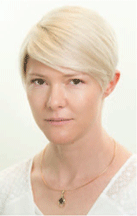Identifying pan-industry common contributors to major accident events
Joelle Mitchell A B and Alice Turnbull AA NOPSEMA, 58 Mounts Bay Road, Perth, WA 6000, Australia.
B Corresponding author. Email: joelle.mitchell@nopsema.gov.au
The APPEA Journal 60(1) 41-52 https://doi.org/10.1071/AJ19036
Submitted: 6 December 2019 Accepted: 14 February 2020 Published: 15 May 2020
Abstract
Analysis of incident investigation findings as a means of identifying common precursors or causal factors is a common topic of safety research. Historically this type of research has been conducted through a single lens, depending on the researcher’s discipline, with incidents analysed in accordance with a favoured theory, or grouped according to industry or region. This has led to the development of numerous frameworks and taxonomies that attempt to predict or analyse events at various levels of granularity. Such theories and disciplines include safety culture and climate, human factors, human error, management systems, systems theory, engineering and design, chemistry and maintenance. The intent of such research is ostensibly to assist organisations in understanding the degree to which their operations are vulnerable to known precursors or causal factors to major accident events and to take proactive measures to improve the safety of their operations. However, the discipline-specific nature of much of this research may limit its application in practice. Specific frameworks and taxonomies may be of assistance when organisations have identified a relevant area of vulnerability within their operations, but are unlikely to assist organisations in identifying those vulnerabilities in the first place. This paper seeks to fill that gap. A multidisciplinary approach was taken to identify common causal factors. Investigation reports published by independent investigation agencies across various industries were analysed to determine common causal factors regardless of discipline or industry.
Keywords: accident prevention, common causal factors, human factors, incident investigation, MAE, safety, safety management system, systems theory.

Joelle Mitchell is an Organisational Psychologist and human factors specialist, and is the Human Factors Technical Officer for NOPSEMA (National Offshore Petroleum Safety and Environmental Management Authority). She applies the principles of evidence-based practice to facilitate improvement in safety outcomes within NOPSEMA’s compliance and improvement activities. Joelle has worked internally for petroleum companies and as a consultant to the onshore mining industry. Joelle is a Fellow of the Australian Psychological Society College of Organisational Psychologists. Her qualifications include a BSc (Honours) and a Master of Applied Psychology. |

Alice Turnbull is currently the Strategic Compliance Manager at NOPSEMA. With tertiary qualifications as an environmental engineer (EEng (Honours)) and scientist (BSc), Alice’s career has evolved from consulting and regulating in the environment arena, with a focus on environmental and social impact assessment and environmental risk management, to a broader, strategic and multidisciplinary role on strategic risk management and regulation across fields as diverse as process safety, well integrity and environmental management. |
References
Alonso, I., and Broadribb, M. (2018). Human error: a myth eclipsing real causes. Process Safety Progress 37, 145–149.| Human error: a myth eclipsing real causes.Crossref | GoogleScholarGoogle Scholar |
Antonovsky, A. D. (2010). The relationship between human factors and plant maintenance reliability in a petroleum processing organisation. PhD Thesis, Curtin University of Technology, Perth.
Argonne National Laboratory (2018). ‘Risk-based evaluation of offshore oil and gas operations using a success path approach.’ (Bureau of Safety and Environmental Enforcement: Chicago.)
Australian Transport Safety Bureau (2017). Breakaway of Spirit of Tasmania. ATSB Transport Safety Report Marine Occurrence Investigation 324-MO-2016–001.
Australian Transport Safety Bureau (2018). Near hit with detrained passengers on track. ATSB Transport Safety Report Rail Occurrence Investigation RO-2014–009.
Australian Transport Safety Bureau (2019). In-flight upset, inadvertent pitch disconnect, and continued operation with serious damage involving ATR 72 aircraft, VH-FVR. ATSB Transport Safety Report Aviation Occurrence Investigation AO-2014–032.
Belke, J. (1998). Recurring causes of recent chemical accidents. International Conference and Workshop on Reliability and Risk Management. Plant Maintenance Resource Centre, San Antonio, Texas. Available at https://www.plant-maintenance.com/articles/ccps.shtml [verified 17 February 2020].
Bell, J., and Williams, J. C. (2016). Consolidation of the HEART human reliability assessment principles. In: ‘Proceedings of Hazards 26, Symposium Series 16 (IChemE), Edinburgh, UK’. Available at https://www.icheme.org/media/11796/hazards-26-paper-59-consolidation-of-the-heart-human-reliability-assessment-principles.pdf [verified 17 February 2020].
Boring, R. L. (2010). How many performance shaping factors are necessary for human reliability analysis? In: ‘Proceedings of the 10th International Probabilistic Safety Assessment & Management Conference (PSAM10), Seattle, WA.’
Civil Aviation Safety Authority (2013). ‘Human Factors Resource Guide for Engineers’. (Civil Aviation Safety Authority Australia.)
CSB (2019a). Gas well blowout and fire at Pryor Trust Well 1H–9. Investigation Report 2018–01-I-OK. U.S. Chemical Safety and Hazard Investigation Board.
CSB (2019b). Toxic chemical release at the DuPont La Porte chemical facility. Investigation Report 2015–01-I-TX. U.S. Chemical Safety and Hazard Investigation Board.
Dedoose (2019). Versions 8.2.14, web application for managing, analyzing, and presenting qualitative and mixed method research data. SocioCultural Research Consultants LLC, Los Angeles, CA. Available at www.dedoose.com [verified 17 February 2020].
Dekker, S. (2011). ‘Drift into Failure: From Hunting Broken Components to Understanding Complex Systems.’ (Ashgate: Aldershot, UK.)
Gertman, D., Blackman, H., Marble, J., Byers, J., and Smith, C. (2005). ‘The SPAR-H Human Reliability Analysis Method.’ NUREG/CR-6883. (U.S. Nuclear Regulatory Commission.)
Grant, E., Salmon, P. M., Stevens, N. J., Goode, N., and Read, G. J. (2018). Back to the future: what do accident causation models tell us about accident prediction? Safety Science 104, 99–109.
| Back to the future: what do accident causation models tell us about accident prediction?Crossref | GoogleScholarGoogle Scholar |
Gyenes, Z., and Carson, P. (2017). Runaway reactions. Part 2 causes of accidents in selected CSB case studies. IChemE Loss Prevention Bulletin 256, .
Hollnagel, E. (1998). ‘Cognitive Reliability and Error Analysis Method (CREAM).’ (Elsevier Science.)
Hollnagel, E. (2012). ‘FRAM: the functional resonance analysis method: modelling complex socio-technical systems.’ (Ashgate: Aldershot, UK)
Hollnagel, E. (2014). ‘Safety-I and Safety-II: the past and future of safety management.’ (CRC Press: Boca Raton, FL, USA.)
Hollnagel, E., Woods, D., and Leveson, N. (2006). ‘Resilience Engineering: Concepts and Precepts.’ (Ashgate: Aldershot, UK).
Hopkins, A. (2000). ‘Lessons from Longford.’ (CCH Australia Ltd: Sydney.)
Hopkins, A. (2019). ‘Organising for Safety: How Structure Creates Culture.’ (Wolters Kluwer: Sydney.)
Hopkins, A., and Maslen, S. (2015). ‘Risky Rewards: How Company Bonuses Affect Safety.’ (CRC Press: Boca Raton, FL, USA.)
International Organization for Standardization. (2018). Occupational health and safety management systems: Requirements with guidance for use (ISO 45001:2018).
Kidam, K., and Hurme, M. (2013). Analysis of equipment failures as contributors to chemical process accidents. Process Safety and Environmental Protection 91, 61–78.
| Analysis of equipment failures as contributors to chemical process accidents.Crossref | GoogleScholarGoogle Scholar |
Laporte, T. R., and Consolini, P. M. (1991). Working in practice but not in theory: theoretical challenges of “high reliability organisations”. Journal of Public Administration: Research and Theory 1, 19–48.
Leveson, N. (2004). A new accident model for engineering safer systems. Safety Science 42, 237–270.
| A new accident model for engineering safer systems.Crossref | GoogleScholarGoogle Scholar |
Longo, F., Nicoletti, L., and Padovano, A. (2019). Modeling workers’ behaviour: a human factors taxonomy and a fuzzy analysis in the case of industrial accidents. International Journal of Industrial Ergonomics 69, 29–47.
| Modeling workers’ behaviour: a human factors taxonomy and a fuzzy analysis in the case of industrial accidents.Crossref | GoogleScholarGoogle Scholar |
Marine Accident Investigation Branch (2016). Report on the investigation of the capsize and sinking of the cement carrier Cemfjord in the Pentland Firth, Scotland with the loss of all eight crew on 2 and 3 January 2015. Report No 8/2016.
Mukhopadhyay, S., Halligan, J., and Hastak, M. (2016). Assessment of major causes: nuclear power plant disasters since 1960. International Journal of Disaster Resilience in the Built Environment 7, 521–543.
| Assessment of major causes: nuclear power plant disasters since 1960.Crossref | GoogleScholarGoogle Scholar |
National Transportation Safety Board (2018). Taxiway overflight Air Canada flight 759 Airbus A320–211, C-FKCK San Francisco, California July 7, 2017. Incident Report NTSB/AIR-18/01 PB2018–101561.
Nivolianitou, Z., Konstantinidou, M., and Michalis, C. (2006). Statistical analysis of major accidents in petrochemical industry notified to the major accident reporting system (MARS). Journal of Hazardous Materials 137, 1–7.
| Statistical analysis of major accidents in petrochemical industry notified to the major accident reporting system (MARS).Crossref | GoogleScholarGoogle Scholar | 16647814PubMed |
Okoh, P., and Haugen, S. (2013). Maintenance-related major accidents: classification of causes and case study. Journal of Loss Prevention in the Process Industries 26, 1060–1070.
| Maintenance-related major accidents: classification of causes and case study.Crossref | GoogleScholarGoogle Scholar |
Okoh, P., and Haugen, S. (2014). A study of maintenance related major accident cases in the 21st century. Process Safety and Environmental Protection 92, 346–356.
| A study of maintenance related major accident cases in the 21st century.Crossref | GoogleScholarGoogle Scholar |
Perrow, C. (1981). Normal accident at Three Mile Island. Society 18, 17–26.
| Normal accident at Three Mile Island.Crossref | GoogleScholarGoogle Scholar |
Provan, D. J., Woods, D. D., Dekker, S. W. A., and Rae, A. J. (2020). Safety II professionals: how resilience engineering can transform safety practice. Reliability Engineering & System Safety 195, 106740..
| Safety II professionals: how resilience engineering can transform safety practice.Crossref | GoogleScholarGoogle Scholar |
Rasmussen, J. (1997). Risk management in a dynamic society: a modelling problem. Safety Science 27, 183–213.
| Risk management in a dynamic society: a modelling problem.Crossref | GoogleScholarGoogle Scholar |
Reason, J. (1997). ‘Managing the Risks of Organizational Accidents.’ (Ashgate: Aldershot, UK.)
Reason, J., Carthey, J., and de Leval, M. R. (2001). Diagnosing “vulnerable system syndrome”: an essential prerequisite to effective risk management. Quality in Health Care 10, ii21–ii25.
| 11700375PubMed |
Robertson, K., Blakc, J., Grand-Clement, S., and Hall, A. (2016). ‘Human and Organisational Factors in Major Accident Prevention.’ (Rand: Cambridge, UK.)
Stamatelatos, M., and Dezfuli, H. (2011). ‘Probabilistic Risk Assessment Procedures Guide for NASA Managers and Practitioners.’ 2nd edn. (NASA: Washington DC.)
Standards Australia and Standards New Zealand (1997). Occupational health and safety management systems – Specification with guidance for use (AS/NZS 4804:1997)
Swain, A. D., and Guttmann, H. E. (1983). ‘Handbook of Human Reliability Analysis with Emphasis in Nuclear Power Plant Applications.’ NUREG/CR-1278. (U.S. Nuclear Regulatory Commission.
Swain, A. D., Altman, J. W., and Rook, L. W., Jr (1963). ‘Human Error Quantification.’ (United States Atomic Energy Commission: Albuquerque, NM, USA.)
Turner, B. A. (1978). ‘Man-made Disasters.’ (Wykeham Publications: London.)
Vaughan, D. (1996). ‘The Challenger Launch Decision: Risk Technology, Culture, and Deviance at NASA.’ (The University of Chicago Press: Chicago.)
Yang, X., Ding, L. T. T., Castellanos, D., Osorio Amado, C. H., Ng, D., and Mannan, M. S. (2011). Common lessons learned from an analysis of multiple case histories. Process Safety Progress 30, 143–147.
| Common lessons learned from an analysis of multiple case histories.Crossref | GoogleScholarGoogle Scholar |


